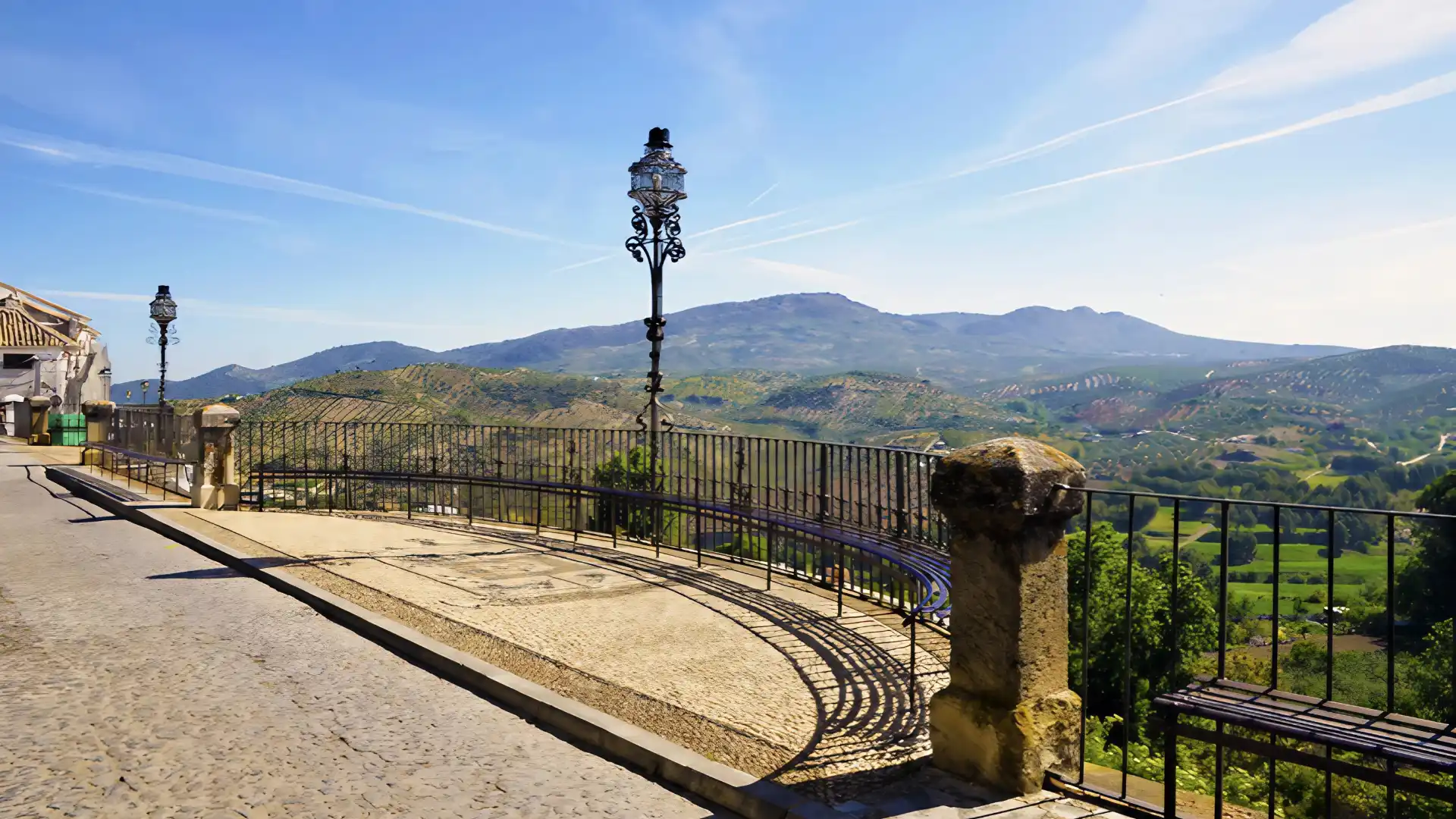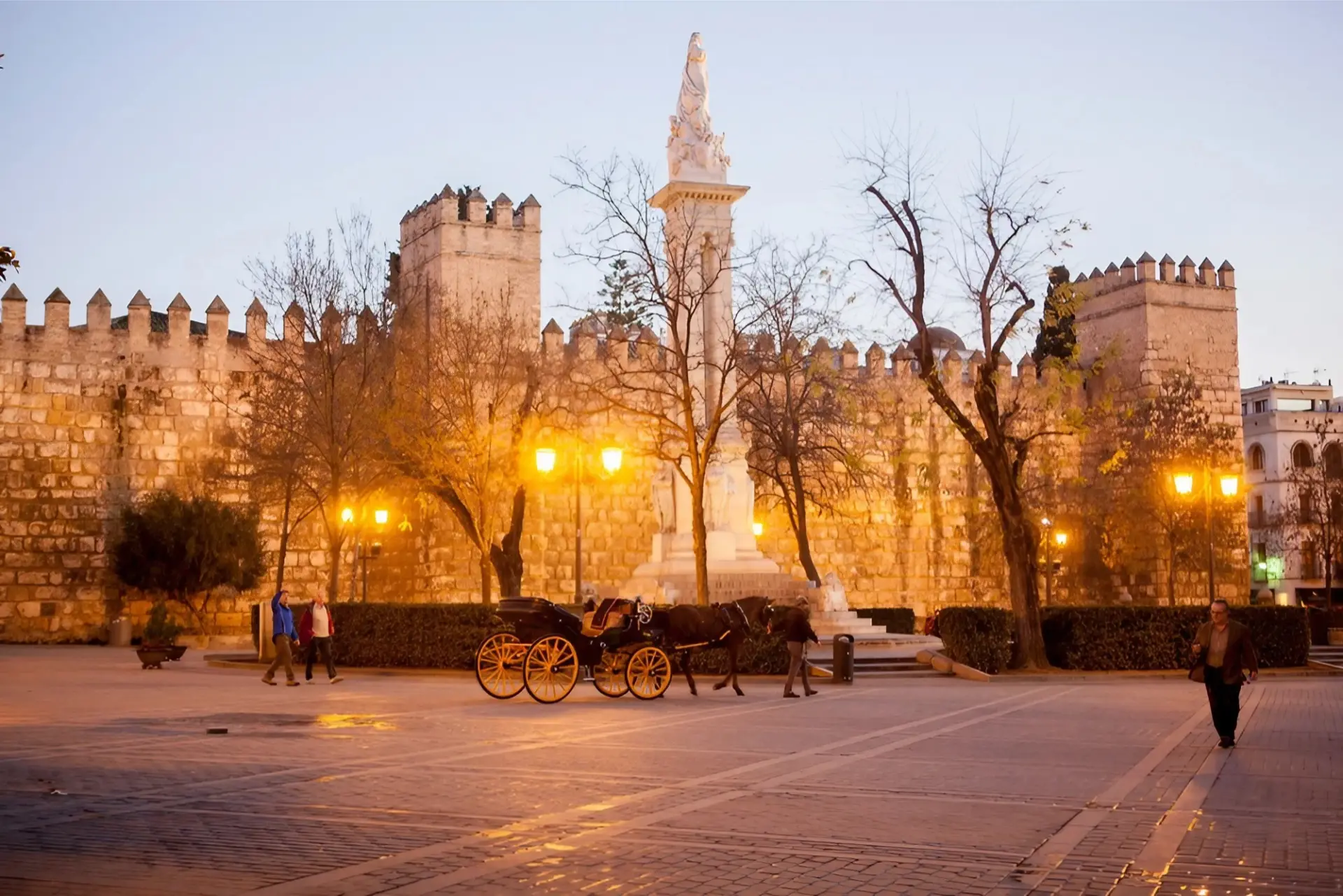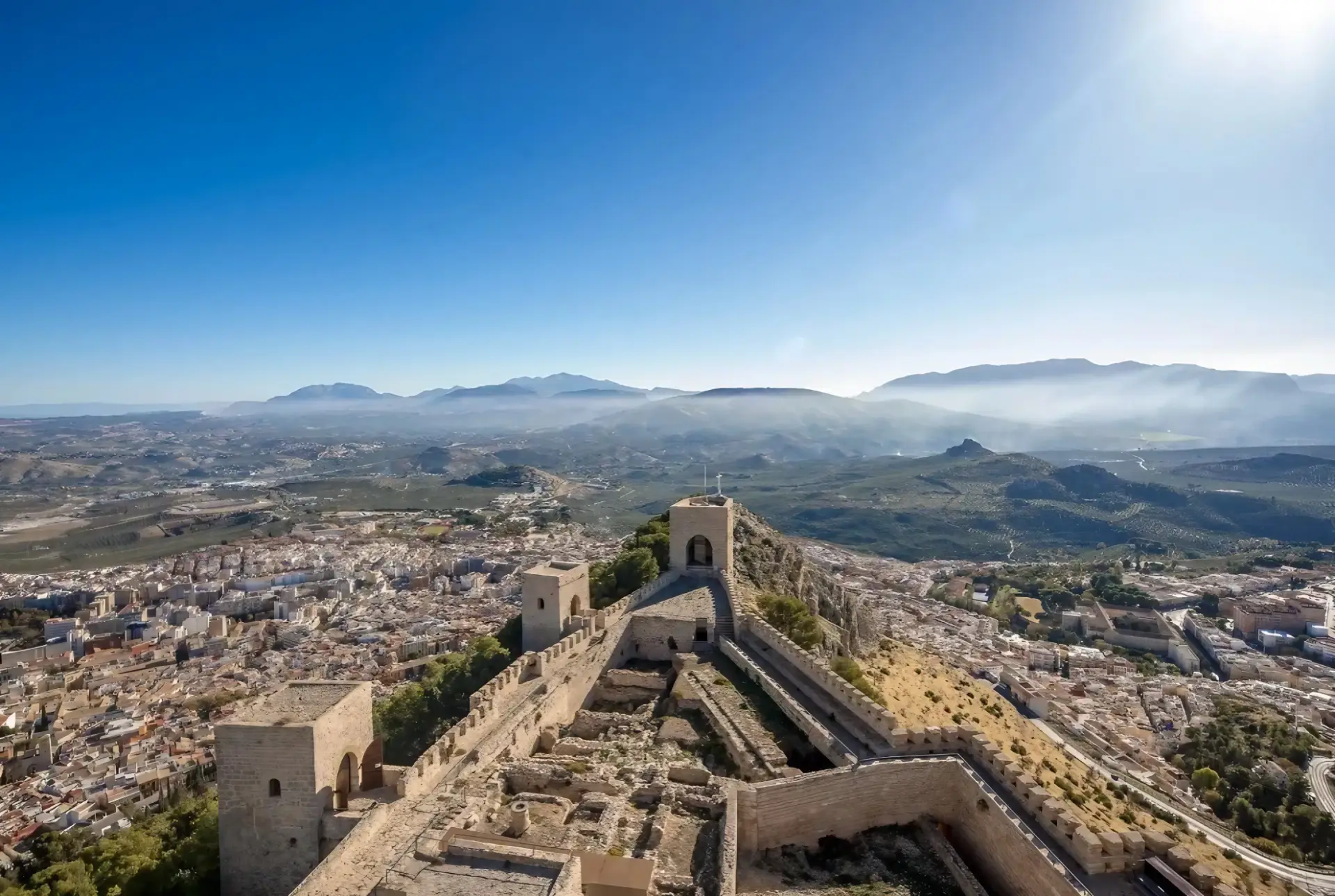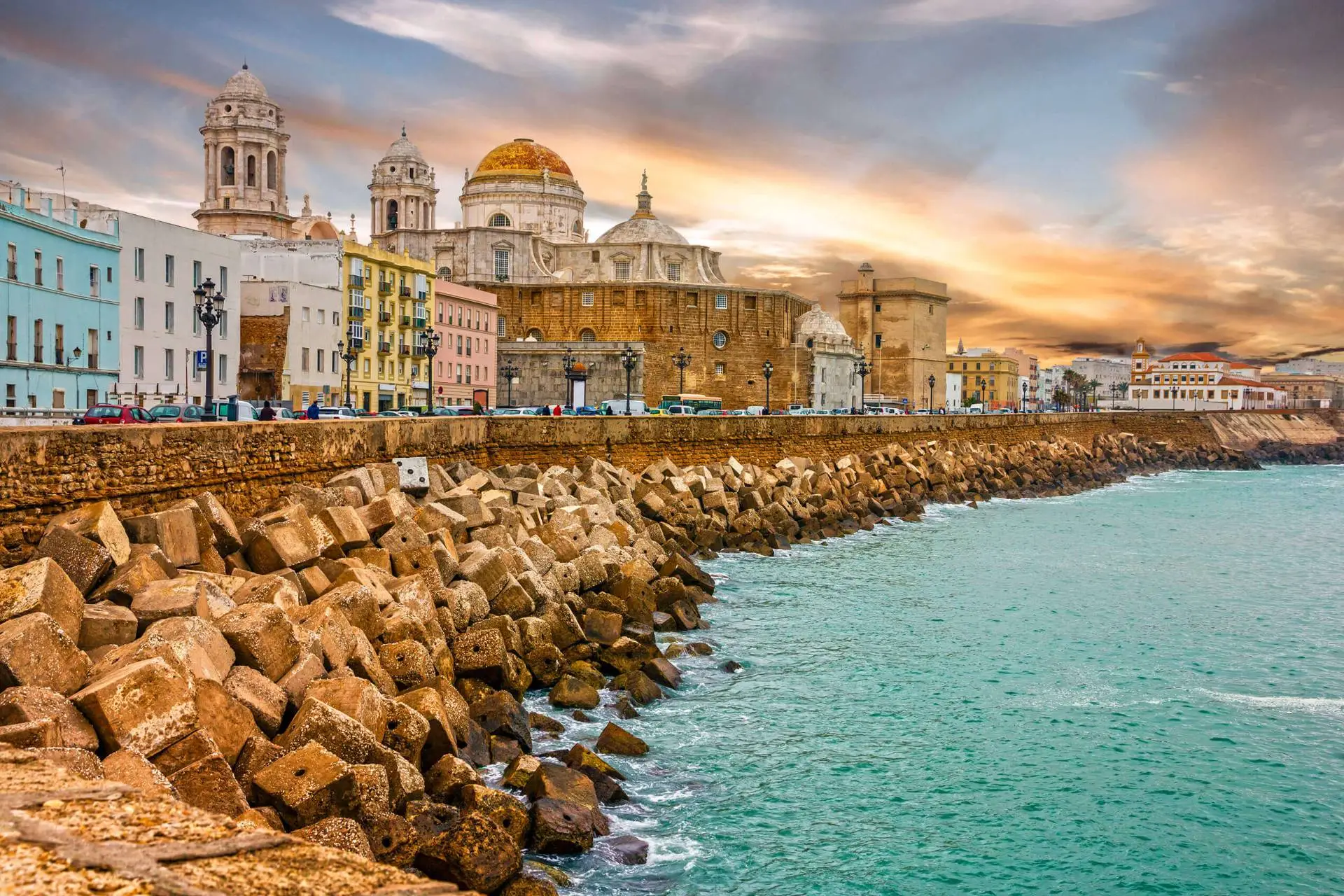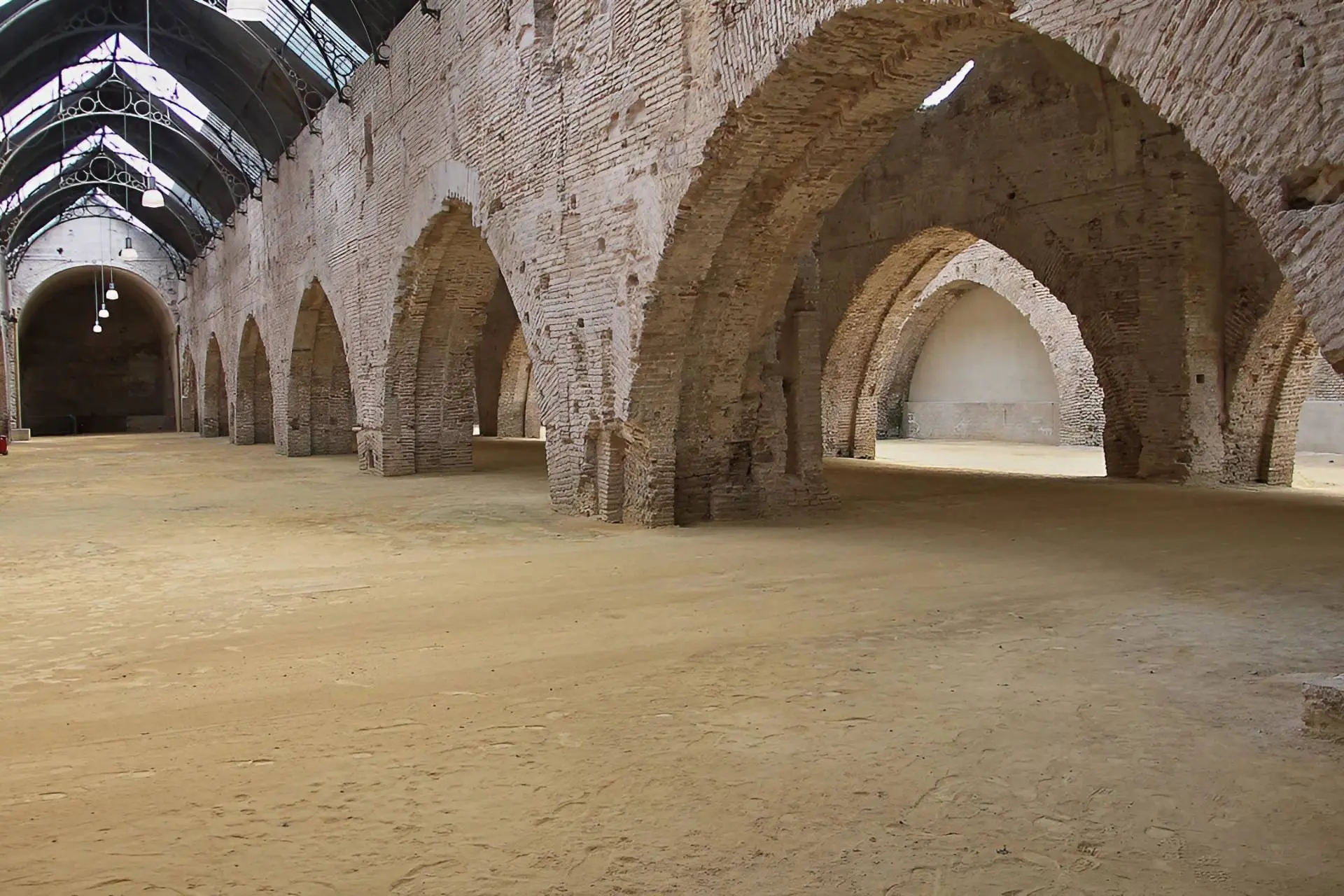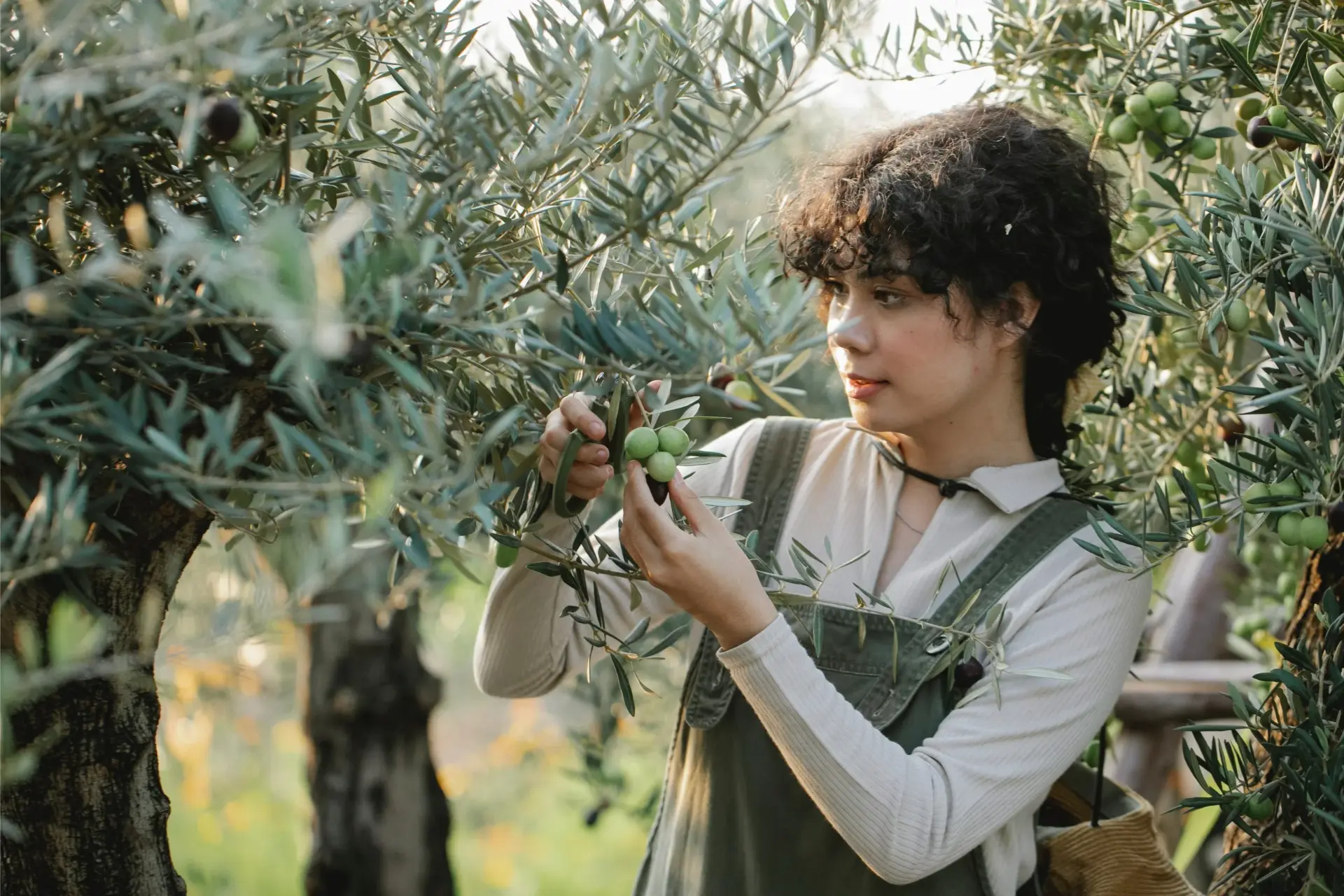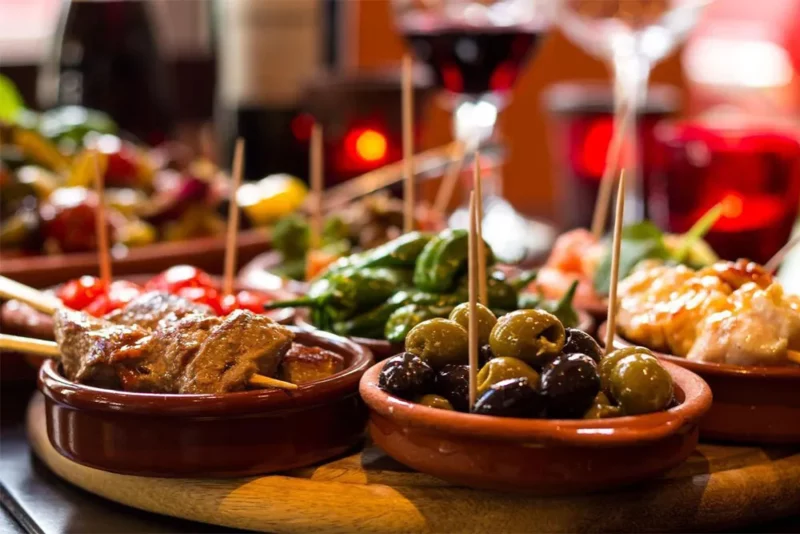
Andalucia’s gastronomy is influenced by varied cultures, and its capital Seville is no exception. What may be surprising for many is that hearty dishes dominate the menu. Seville may be hot during the summer, but the winter months are deserving of warm meals. Based some distance from the sea, it is perhaps not so surprising that most of the typical foods in Seville are based on legumes, meats and root vegetables.
Whether you enjoy the following dishes as tapas in a Seville bar, or as a main course in a fancy restaurant, the following dishes reflect the culture of Seville.
Espinacas con Garbanzos
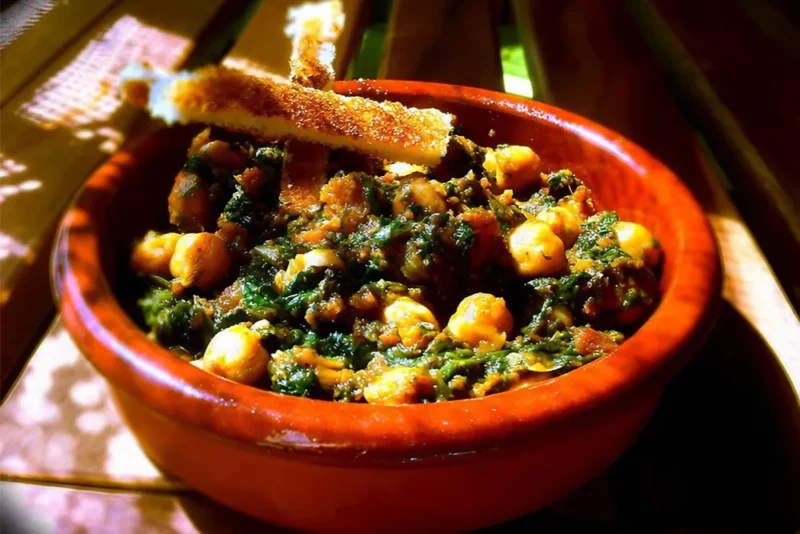
Espinacas con Garbanzos offers a vegetarian option deeply rooted in Seville’s culinary tradition. Sautéed spinach and chickpeas, seasoned with garlic, paprika, and a drizzle of olive oil, showcase the robust flavors derived from local produce.
Espinacas con garbanzos is one of those typical Andalusian dishes that dates back to Moorish times. Spinach and cumin made their way into Spanish cuisine via the Moors. Chickpeas are believed to have arrived on Andalucian shores courtesy of the Phoenicians.
Carrillada
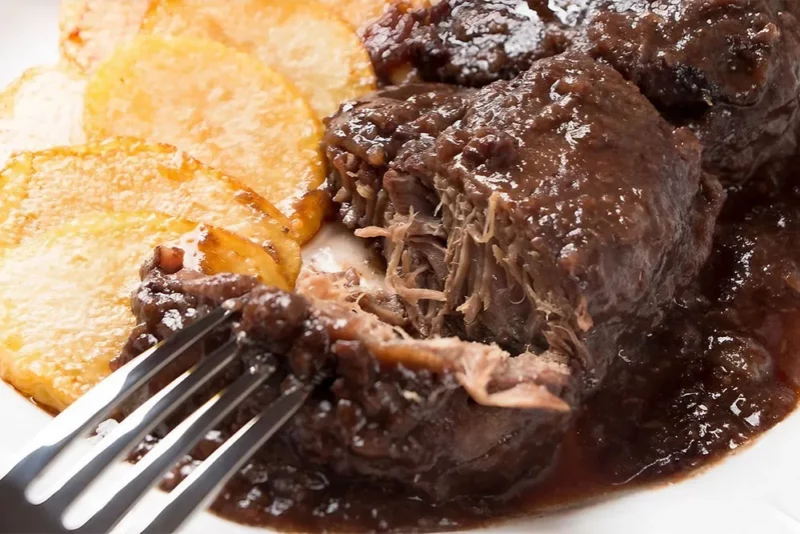
For an authentic Sevillian experience, carrillada is a culinary masterpiece. Pork or beef cheeks, slow-cooked to perfection, absorb rich, aromatic spices, resulting in a melt-in-your-mouth delicacy that underscores Seville’s mastery in preparing meat.
The Iberian pork cheeks are often cooked in a sweet wine sauce, usually Pedro Ximenez from neighbouring Jerez de la Frontera.
Secreto Ibérico
Secreto Ibéricom which translates as Iberian Secret, is a hidden gem among pork cuts. A slender cut situated between the shoulder blade and the loin of an Iberian pig it is considered a delicacy in Andalucia. This particular cut boasts a distinctive marbling, intricately woven into layers of flavourful fat.
Renowned for its succulence and tenderness, no other pork rivals the juiciness and delicacy of this meat and underscores Seville’s commitment to preserving traditional flavours.
Berza de Acelgas
Berza de Acelgas combines Swiss chard with potatoes, chickpeas, and an assortment of spices. The dish has its origins in the village of Isla Menor, just outside Sevilla and reflects Seville’s commitment to wholesome, locally sourced ingredients.
Pato a la Sevillana
Pato a la Sevillana, a Sevillian duck dish, marries succulent duck with a medley of spices, tomatoes, and olives. Slow-cooked to perfection with ingredients such as garlic, onions, tomatoes, bacon, olives, and sherry, the duck is removed once golden brown and the sauce made in the same pot, using the juices.
Puchero
Puchero is a one-pot wonder, a Sevillian stew that combines various meats, vegetables, and legumes. The recipe varies from household to household, using whichever vegetables are available at the time. The meat can also vary from chicken to pork.
Serranito
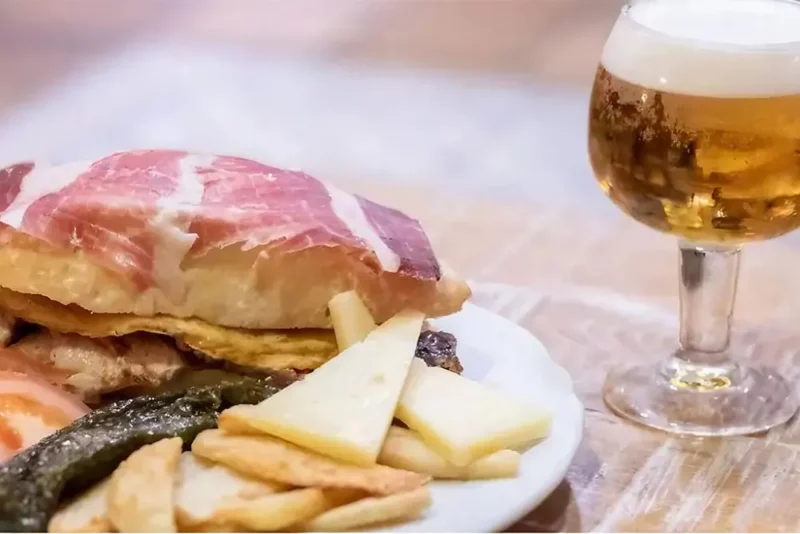
The Serranito sandwich is a Sevillian street food triumph. Packed with flavours, it features grilled pork, Serrano ham, and green peppers, fantastic for lunch or a filling breakfast to set you up for a day exploring the city.
In Seville, each dish is a chapter in the province’s culinary narrative, a testament to its vibrant history and diverse cultural influences. Seville’s traditional foods invite you to embark on a journey of flavoursome sensations that reflect the essence of this captivating Spanish city.

